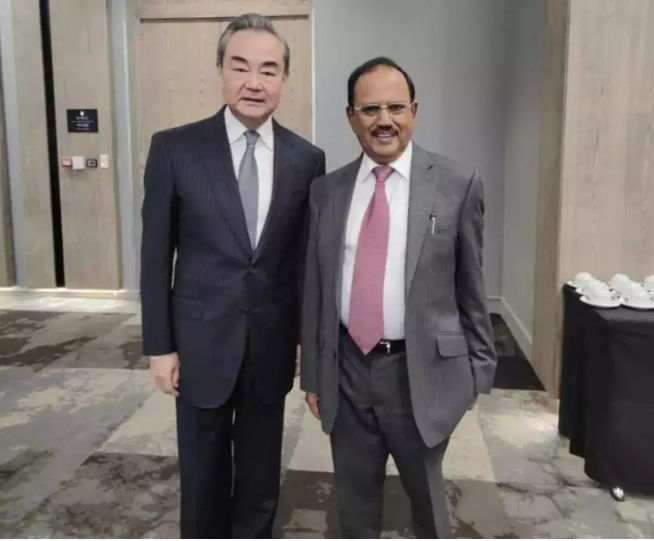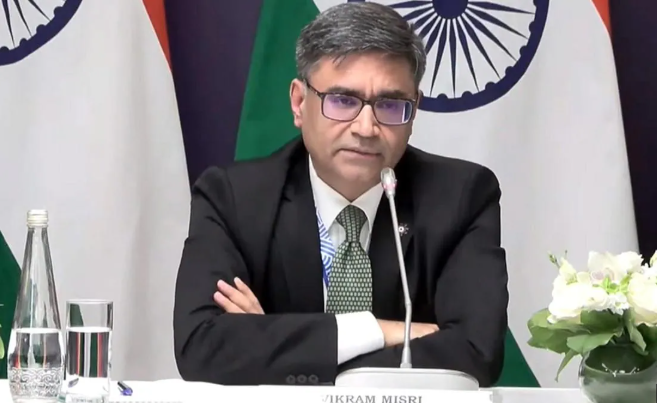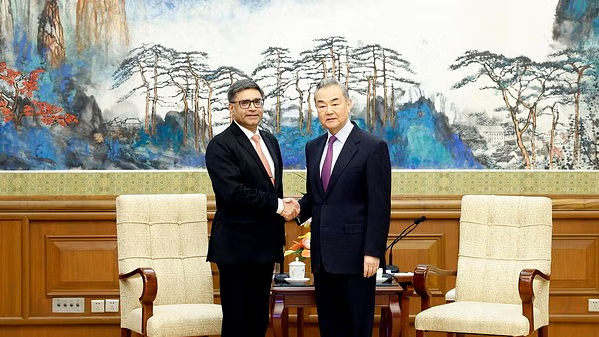In a significant diplomatic breakthrough, India and China have initiated steps to stabilize their strained ties. Following the disengagement of troops in November, both nations have now agreed on measures aimed at fostering mutual understanding and easing bilateral tensions. The resumption of the Kailash Mansarovar Yatra in the summer of 2025, the reinstatement of direct flights between their capitals, and visa facilitation for journalists and think tanks are among the key decisions outlined in a statement by the Ministry of External Affairs (MEA) on Monday.
This development emerged after Foreign Secretary Vikram Misri’s visit to Beijing, where he met Vice Foreign Minister Sun Weidong, Foreign Minister Wang Yi, and Liu Jianchao, Minister of the International Department of the Communist Party of China.
People-Centric Measures Amid Lingering Challenges
Recalling the October meeting between Prime Minister Narendra Modi and President Xi Jinping at the BRICS Summit in Kazan, the MEA emphasized a commitment to “review the state of bilateral relations comprehensively.” However, while the statement highlighted steps to rebuild trust, it delicately avoided direct mention of the border situation, an issue that has defined the strained dynamics since the 2020 standoff along the Line of Actual Control (LAC) in eastern Ladakh.
Instead, the language hinted at an incremental approach, noting,
“It was agreed to resume these dialogues step by step and to utilize them to address each other’s priority areas of interest and concern.”
Symbolic Actions with Strategic Undertones
Among the agreed measures is the resumption of the Kailash Mansarovar Yatra, a journey deeply symbolic for Indian pilgrims. The relevant mechanisms will discuss the logistics for this sacred expedition. Additionally, the two sides committed to holding early discussions under the India-China Expert Level Mechanism to resume sharing hydrological data on trans-border rivers—a critical area of cooperation that has often mirrored the highs and lows of their relationship.
Further steps include enhancing people-to-people exchanges through media and think tank interactions and resuming direct air services, a move aimed at rekindling economic and cultural ties. The two countries have also recognized the importance of 2025, marking the 75th anniversary of India-China diplomatic relations, as an opportunity to rebuild public diplomacy and mutual trust through commemorative events.
Diplomatic Nuances: A Tale of Two Narratives
While New Delhi’s statement remained cautiously optimistic, the Chinese Foreign Ministry’s readout carried a tone of strategic ambition. Wang Yi’s remarks, emphasizing “exploring substantial measures to promote mutual understanding,” were carefully framed to align with China’s global narrative of advocating for the Global South.
However, his emphasis on avoiding “mutual suspicion, estrangement, and exhaustion” stood in stark contrast to India’s framework of “mutual respect, sensitivity, and interests,” as articulated by External Affairs Minister S. Jaishankar in the past.
The Context of Rebuilding

Misri’s visit is part of a broader effort to repair bilateral ties that have been deeply strained since 2020. This initiative follows several key engagements, including the December meeting between National Security Advisor Ajit Doval and Wang Yi, and the announcement of a border patrolling arrangement in October. The ongoing efforts reflect an acknowledgment of the complexities in India-China relations, where diplomacy must walk a tightrope between cooperation and confrontation.
A Fragile Path Forward

The measures outlined—while promising—cannot erase the lingering mistrust born out of past confrontations. The decision to mark 2025 with commemorative events is both symbolic and strategic, as it aims to rebuild confidence not just between governments but also among their people.
However, this thaw in relations, though significant, must contend with the shadow of unresolved border tensions and competing narratives on mutual priorities. The challenge lies in ensuring that these steps lead to substantive progress rather than remaining gestures of goodwill.
As the two nations navigate this complex terrain, the question remains: Can these measures serve as the foundation for a renewed relationship, or will they simply be remembered as fleeting moments in a long-standing geopolitical rivalry?








